.jpg)
Back
Adenanthera pavonina L.
| Family Name: | Fabaceae (Leguminosae) |
| Common Name: | Saga, Coral Bean Tree, Daun Tumpul, Suga, Redwood, Red Sandalwood Tree, Peacock Flower Fence, Barbados Pride, Coral Pea, Red Bead Tree, Circassian Bean, Coralwood, 相思豆, 海红豆, 孔雀豆 |
Adenanthera pavonina, also known as Saga, is a tall tree with a spreading crown and white-yellow fragrant flowers when in bloom. The seeds are scarlet red and shiny, and are used to make necklaces. The wood is hard and used for construction, furniture-making and firewood.
Name
Classifications and Characteristics
| Plant Division | Angiosperms (Flowering Seed Plants) (Dicotyledon) |
|---|---|
| Plant Growth Form | Tree |
| Lifespan (in Singapore) | Perennial |
| Mode of Nutrition | Autotrophic |
| Plant Shape | Irregular |
| Maximum Height | 25 m to 40 m |
Biogeography
| Native Distribution | From India, Sri Lanka, Southeast Asia to Queensland |
|---|---|
| Native Habitat | Terrestrial (Primary Rainforest, Secondary Rainforest, Coastal Forest) |
| Preferred Climate Zone | Tropical |
| Local Conservation Status | Non-native (Spontaneous (Naturalised)) |
Description and Ethnobotany
| Growth Form | It is a tree, up to 40 m tall, and rarely develops buttresses. The tree crown is uneven and rounded, The bark is brown-grey and slightly peeling to flaking. |
|---|---|
| Foliage | Leaves bipinnately-compound with 2-6 pairs of secondary stalks, about 6.5 – 20 cm long. Each secondary stalk has 4 – 9 (- 11) pairs of leaflets. Leaflet is pale green, thin, elliptic to ovate shaped (1.5 – 4.5 cm long and 1 – 2.2 cm wide). It has rounded to truncate tip and unequal base. The upper surface of the leaflet is smooth while the underside is covered with appressed fine hairs. The tree sheds its leaves for brief periods every 6-8 months in Singapore. |
| Flowers | Flowers occur in a cluster (Raceme). The raceme is 12 – 30 cm long and flowers open from the base to the tip of the inflorescence. Flowers are white to yellow and turning dark yellow after anthesis. Flowers are small (0.3 – 0.5 cm) and strongly fragrant. In Singapore, the tree is observed to bloom throughout the year and peaking in May. |
| Fruit | Fruit pod is woody, curved and about 25 cm long and 1.3 – 1.8 cm wide. The pod is green and almost straight when young. As it matures, the pod turns brown, twists spirally and splits open to reveal the seeds within. Each fruit contains up to 25 seeds. They are bright scarlet red, shiny, hard and lens-shaped (0.7 – 0.9 cm long, 0.7 – 0.95 cm wide, 0.65 cm thick), with faint “heart line” (pleurogram) around the margin. |
| Habitat | It is found in lowland rain forest margin, swamp forest, coastal forest, up to 600 m altitude. It is an exotic species which has naturalized in Singapore, growing wildly at forest edges, open fields and along roads. |
| Associated Fauna | Host plant of the Plain Nawab (Polyura hebe lautus). Seeds are eaten and dispersed by birds. |
| Cultivation | Saga is a fast-growing tree which thrives on well-drained, neutral to slightly acidic soil. It can be propagated by seeds where they can be scarified, nicked or pre-soaked in water before sowing. The tree sheds its leaves for brief periods every 6-8 months in Singapore. |
| Etymology | Genus epithet 'Adenanthera' derived from Greek terms ‘aden’ (sticky gland) and ‘anthera’ (anthers), referring to tree's flower anthers being tipped with sticky glands. Species epithet pavonina came from Latin word ‘pavo’, meaning peacock-blue. |
| Ethnobotanical Uses | Medicinal: Ground up seeds used to relieve headaches and rheumatism, as well as treat boils. Uncooked seeds (though toxic) have been used as intoxicant. Timber & Products: Wood is hard and reddish, which is known as red sandalwood. It is used to build cabinets, furniture, wood ornaments and houses, or as fuel. Powdered wood provides a source of red dye, used by Brahmins in India to mark the forehead. Cultural / Religious: Malaysia's first national car Proton Saga is named after this plant. The seeds are ornamental and used to make necklaces. Due to relatively uniform weight (4 seeds weigh about 1 g), seeds are also used in India and Sri Lanka for centuries to weigh gold and silver where every seed is said to weigh exactly the same, although this is not true. In Singapore, the seeds are locally used as fill for tetrahedral bags used in children's game of 'five-stones. Seeds are frequently collected in bottles and are referred as "love beans" , but the latter actually refers to the similar-looking red-black (and very toxic) seeds of Abrus precatorius (Rosarypea). Heritage Tree : There is currently one individual of Adenanthera pavonina listed as a Heritage Tree in Singapore. It can be found in Singapore Botanic Gardens, near the Lady on a Hammock sculpture. To find out more about this tree, please visit the Heritage Tree Register. Others: Roasted or boiled seeds are eaten with rice in Java. Young leaves cooked and eaten during famine. |
Landscaping Features
| Landscaping | In Singapore, the tree is observed to bloom throughout the year and peaking in May. The tree sheds its leaves for brief periods every 6-8 months in Singapore. |
|---|---|
| Desirable Plant Features | Fragrant (Flowers) (Day), Ornamental Seeds |
| Landscape Uses | General |
| Thematic Landscaping | Butterfly Garden, Naturalistic Garden |
| Usage Hazard - Cons | Toxic Upon Ingestion |
| Usage Hazard - Cons Remarks | Raw seeds are poisonous upon ingestion. |
Fauna, Pollination and Dispersal
| Fauna Pollination Dispersal Associated Fauna | Bird-Attracting, Butterfly Host Plant (Associated with: Polyura hebe plautus (Fruhstorfer, 1898)) |
|---|---|
| Seed or Spore Dispersal | Biotic (Fauna) (Seeds are eaten and dispersed by birds.) |
Plant Care and Propagation
| Light Preference | Full Sun |
|---|---|
| Water Preference | Moderate Water |
| Plant Growth Rate | Fast |
| Rootzone Tolerance | Well-Drained Soils, Acidic (low pH) Soils, Saline Soils / Salt Spray |
| Maintenance Requirements | Low |
| Propagation Method | Seed, Stem Cutting |
| Propagule Establishment Remarks | It can be propagated by seeds where they can be scarified, nicked or pre-soaked in water before sowing. |
Foliar
| Foliage Retention | Deciduous |
|---|---|
| Mature Foliage Colour(s) | Green |
| Mature Foliage Texture(s) | Smooth, Thin |
| Foliar Type | Compound (Bipinnate) |
| Foliar Arrangement Along Stem | Spiral |
| Foliar Shape(s) | Non-Palm Foliage (Oblong) |
| Foliar Venation | Pinnate / Net |
| Foliar Margin | Entire |
| Typical Foliar Area | Nanophyll ( 0.25cm2 - 2.25 cm2 ) |
| Leaf Area Index (LAI) for Green Plot Ratio | 3.0 (Tree - Intermediate Canopy) |
Non - Foliar and Storage
| Trunk Type (Non Palm) | Woody |
|---|---|
| Bark Colour(s) | Pinkish-brown to grey |
| Mature Bark Texture | Smooth |
| Stem Type & Modification | Woody |
| Root Type | Underground (Tap Root), Aboveground (Buttress Root) |
Floral (Angiosperm)
| Flower & Plant Sexuality | Bisexual Flowers |
| Flower Colour(s) | Cream / Off-White, Yellow / Golden |
|---|---|
| Individual Flower Shape | Stellate / Star-shaped |
| Inflorescence Type | Raceme |
| Flowering Period | Free-Flowering |
| Flowering Habit | Polycarpic |
| Inflorescence Size Remarks | Flowers mature from white to creamy-yellow to dull orange. |
Fruit, Seed and Spore
| Mature Fruit Colour(s) | Black, Brown |
|---|---|
| Fruit Classification | Simple Fruit |
| Fruit Type | Dehiscent Dry Fruit , Legume / Pod |
References
| References | Nielsen, L.C. (1992). Mimosaceae (Leguminosae—Mimosoideae). Flora Malesiana, ser.1, vol 11, part 1, pp. 1 – 226. |
|---|
Image Repository
Others
| Master ID | 1404 |
|---|---|
| Species ID | 2697 |
| Flora Disclaimer | The information in this website has been compiled from reliable sources, such as reference works on medicinal plants. It is not a substitute for medical advice or treatment and NParks does not purport to provide any medical advice. Readers should always consult his/her physician before using or consuming a plant for medicinal purposes. |

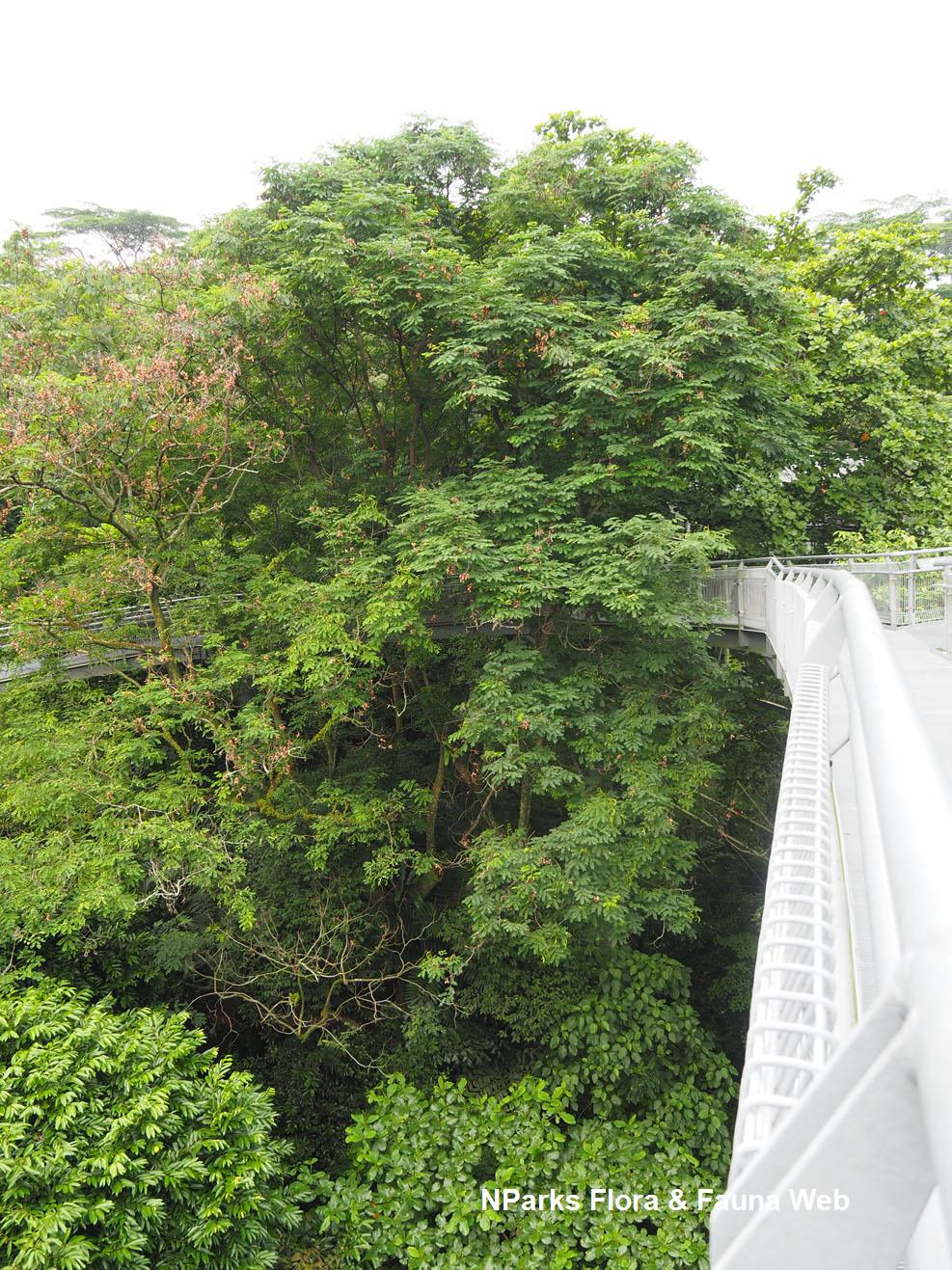
.jpg)
.jpg)
.jpg)
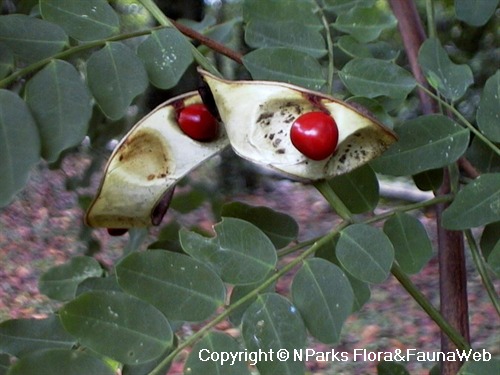
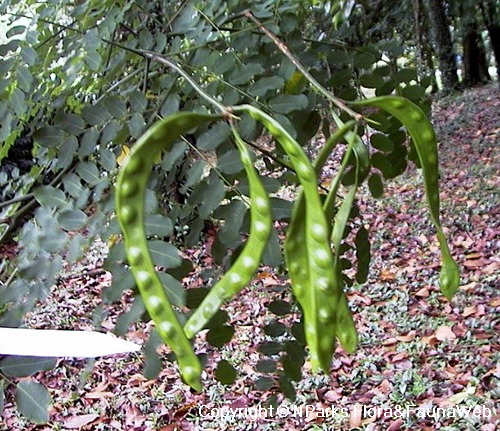
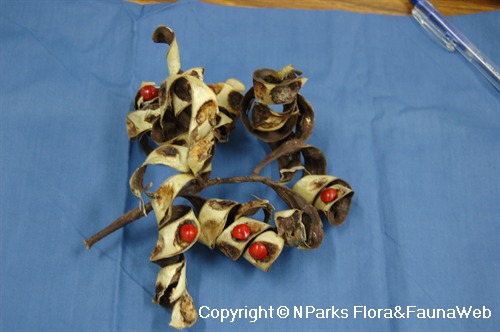
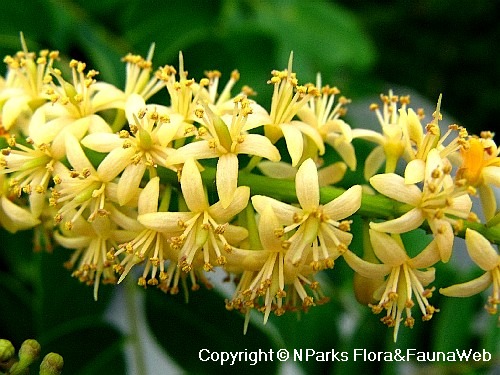
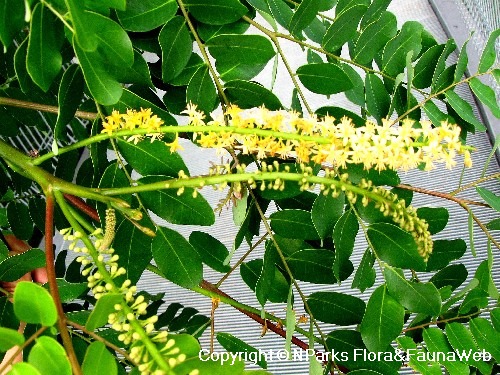
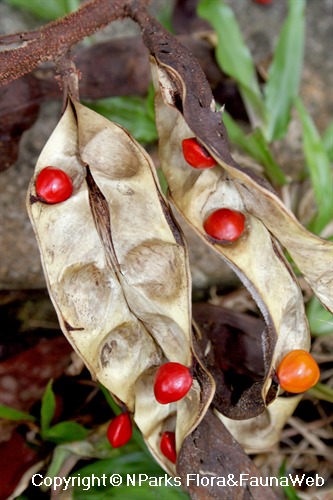
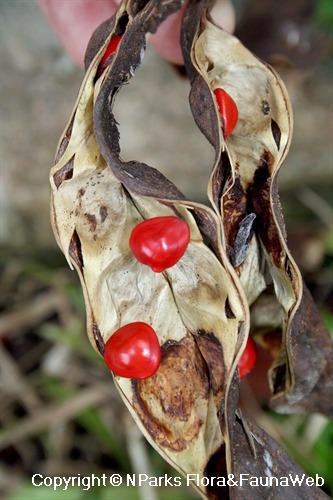
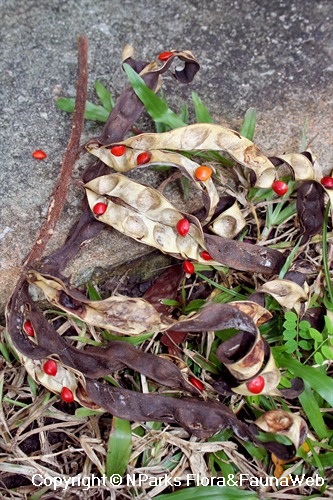
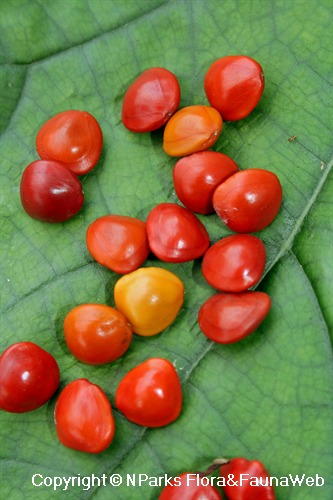
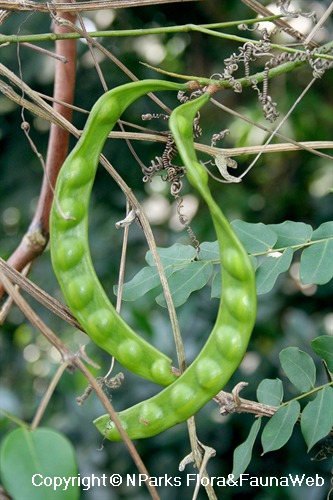
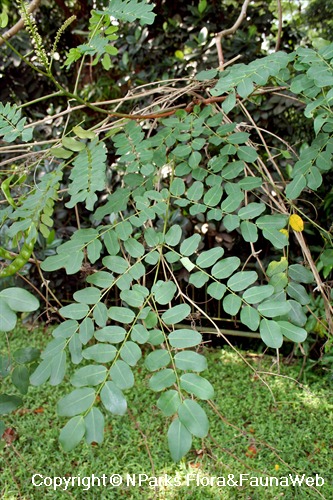
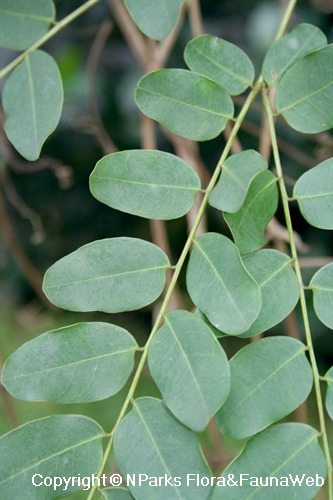
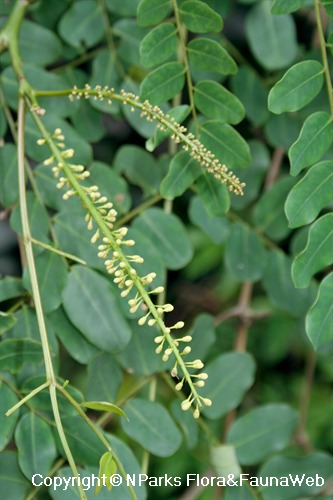
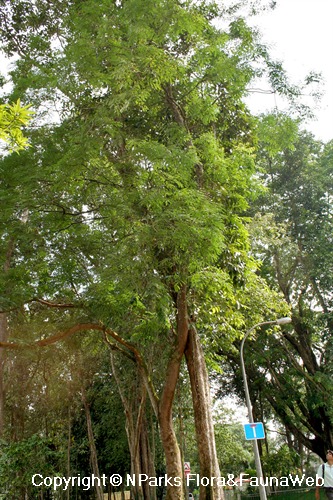
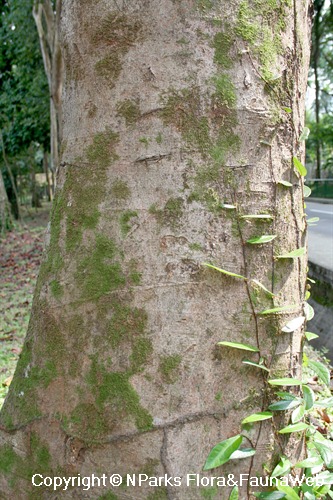
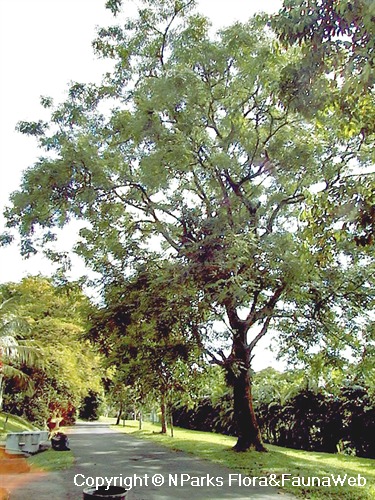
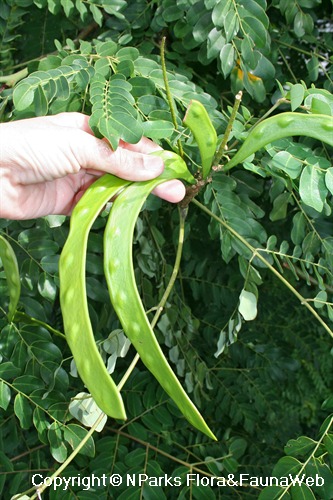
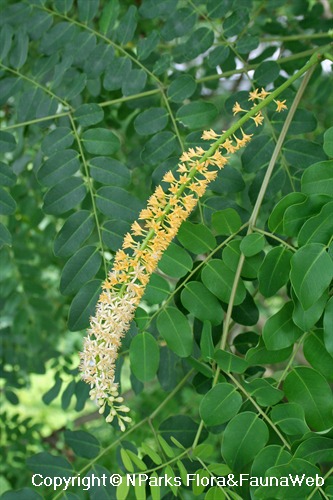
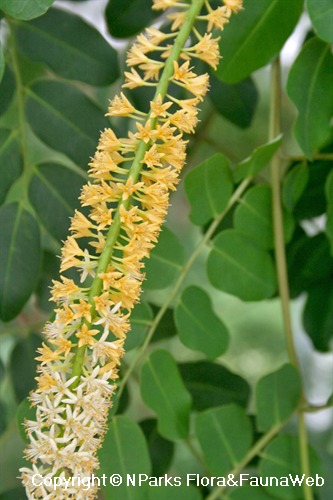
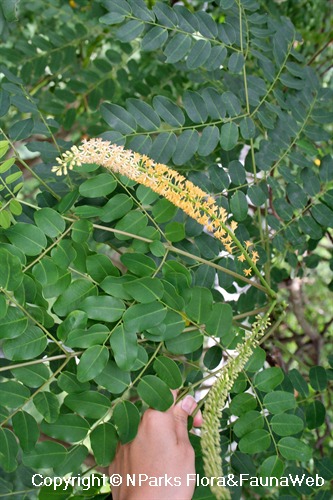
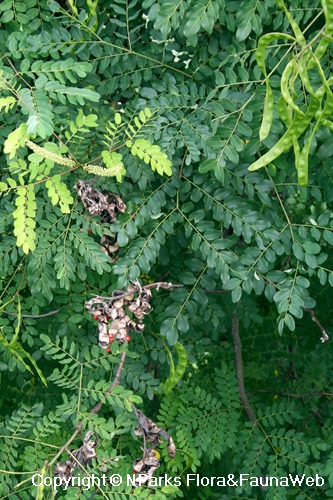
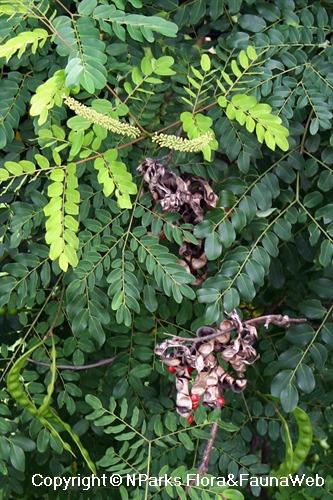
_lowres.jpg)